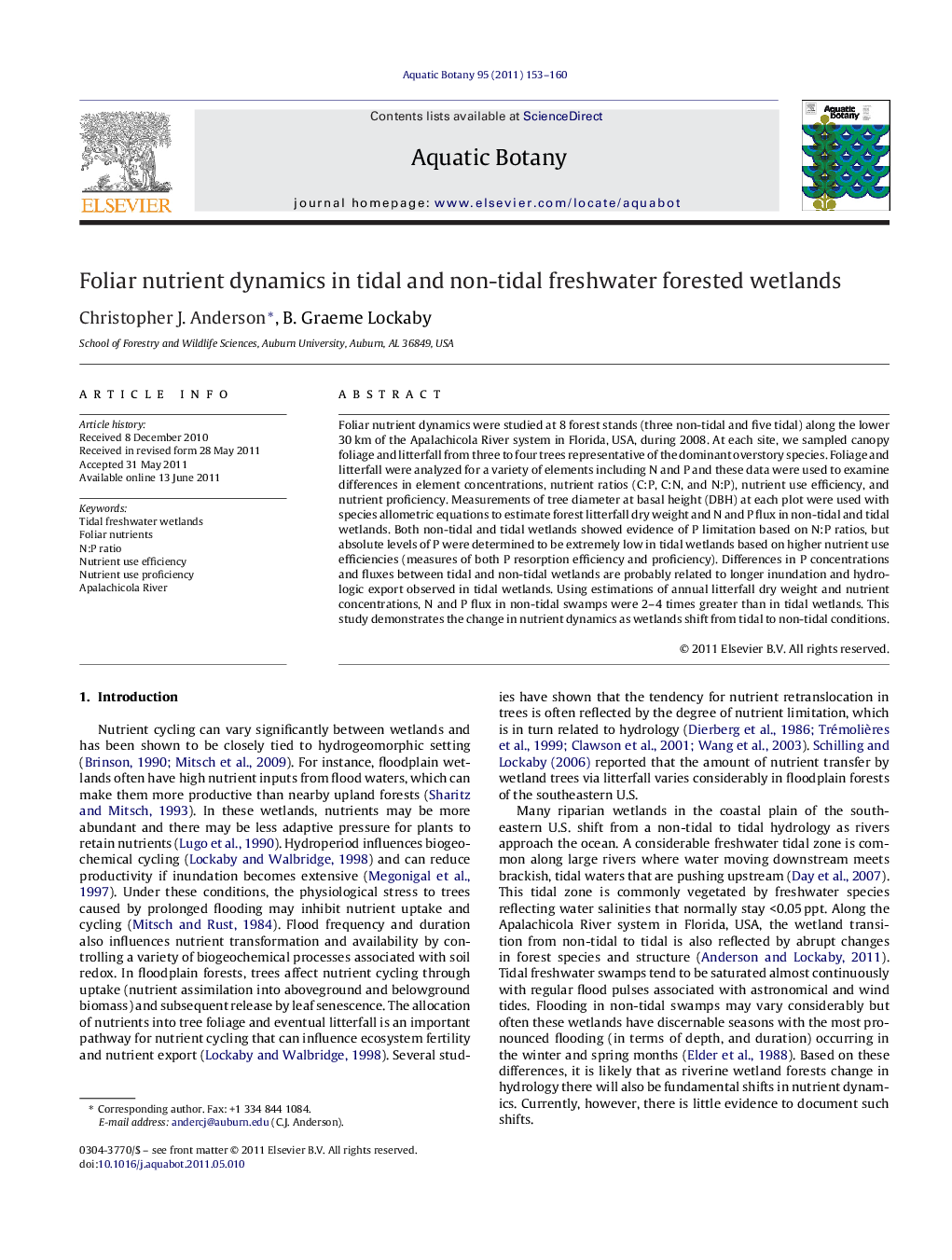| Article ID | Journal | Published Year | Pages | File Type |
|---|---|---|---|---|
| 4528170 | Aquatic Botany | 2011 | 8 Pages |
Foliar nutrient dynamics were studied at 8 forest stands (three non-tidal and five tidal) along the lower 30 km of the Apalachicola River system in Florida, USA, during 2008. At each site, we sampled canopy foliage and litterfall from three to four trees representative of the dominant overstory species. Foliage and litterfall were analyzed for a variety of elements including N and P and these data were used to examine differences in element concentrations, nutrient ratios (C:P, C:N, and N:P), nutrient use efficiency, and nutrient proficiency. Measurements of tree diameter at basal height (DBH) at each plot were used with species allometric equations to estimate forest litterfall dry weight and N and P flux in non-tidal and tidal wetlands. Both non-tidal and tidal wetlands showed evidence of P limitation based on N:P ratios, but absolute levels of P were determined to be extremely low in tidal wetlands based on higher nutrient use efficiencies (measures of both P resorption efficiency and proficiency). Differences in P concentrations and fluxes between tidal and non-tidal wetlands are probably related to longer inundation and hydrologic export observed in tidal wetlands. Using estimations of annual litterfall dry weight and nutrient concentrations, N and P flux in non-tidal swamps were 2–4 times greater than in tidal wetlands. This study demonstrates the change in nutrient dynamics as wetlands shift from tidal to non-tidal conditions.
We examine foliar nutrient dynamics at 8 forest stands (3 non-tidal and 5 tidal) along the lower Apalachicola River. Both non-tidal and tidal wetlands show evidence of P limitation. Phosphorus content in foliage and litterfall is extremely low in tidal wetlands and show higher nutrient use efficiencies (measures of both P resorption efficiency and proficiency). Estimated annual litterfall dry weight and nutrient (N and P) flux in non-tidal swamps are 2–4 times greater than tidal wetlands.
